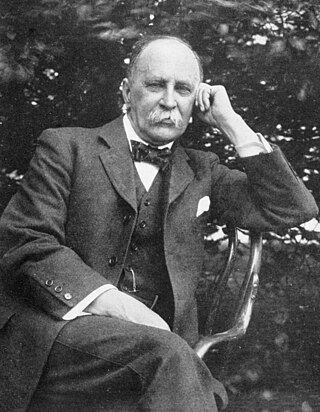
Sir William Osler, 1st Baronet, was a Canadian physician and one of the "Big Four" founding professors of Johns Hopkins Hospital. Osler created the first residency program for specialty training of physicians, and he was the first to bring medical students out of the lecture hall for bedside clinical training. He has frequently been described as the Father of Modern Medicine and one of the "greatest diagnosticians ever to wield a stethoscope". Osler was a person of many interests, who in addition to being a physician, was a bibliophile, historian, author, and renowned practical joker. Outside of medicine, he was passionate about medical libraries and medical history and among his achievements were the founding of the History of Medicine Society, at the Royal Society of Medicine, London. In the field of librarianship he was instrumental in founding the Medical Library Association of Great Britain and Ireland, the Association of Medical Librarians with three others, including Margaret Charlton, the medical librarian of his alma mater, McGill University. He left his large history of medicine library to McGill, where it continues to exist as the Osler Library.
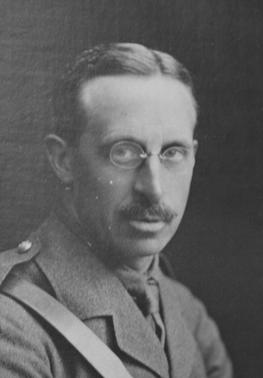
Percy Erskine Nobbs was a Canadian architect who was born in Haddington, East Lothian, and trained in the United Kingdom. Educated at the Edinburgh Collegiate School and Edinburgh University, he spent most of his career in the Montreal area. Often working in partnership with George Taylor Hyde, Nobbs designed a great many of what would become Montreal's heritage buildings and was a key Canadian proponent of the Arts and Crafts Movement in architecture. He served as the director of McGill University's School of Architecture for ten years and designed many buildings on the campus as well as McGill's Coat of Arms, which continues to be used today.
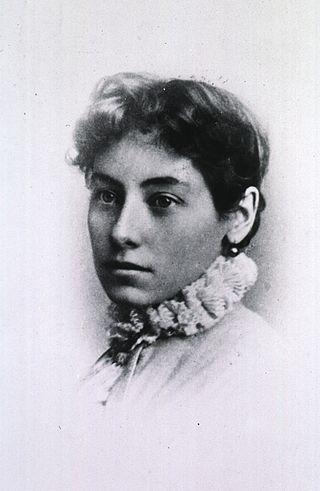
Margaret Charlton was a pioneering Canadian medical librarian who was instrumental in founding the Association of Medical Librarians, which became the Medical Library Association in 1907. She was the association's first secretary.

The McCord Stewart Museum, officially known as the McCord Museum of Canadian History, is a public research and teaching museum dedicated to the preservation, study, diffusion, and appreciation of Canadian history. It is located directly across the street from McGill University, in the downtown core of Montreal, Quebec, Canada.
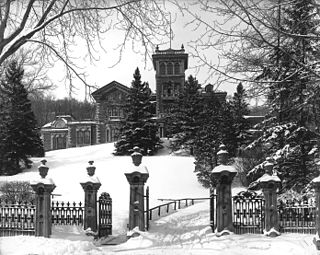
The Golden Square Mile, also known just as the Square Mile, is the nostalgic name given to an urban neighbourhood developed principally between 1850 and 1930 at the foot of Mount Royal, in the west-central section of downtown Montreal, Quebec, Canada. The name "Square Mile" has been used to refer to the area since the 1930s; prior to that, the neighbourhood was known as 'New Town' or 'Uptown'. The addition of 'Golden' was coined by Montreal journalist Charlie Lazarus, and the name has connections to contemporary real-estate developments, as the historical delimitations of the Golden Square Mile overlap with Montreal's contemporary central business district.

Maude Elizabeth Seymour Abbott was a Canadian physician, among Canada's earliest female medical graduates, and an internationally known expert on congenital heart disease. She was one of the first women to obtain a BA from McGill University.
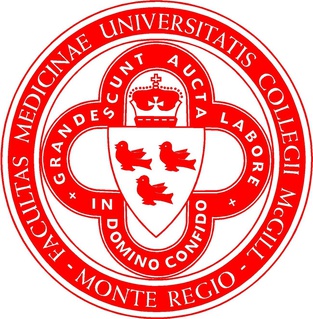
The Faculty of Medicine and Health Sciences is one of the constituent faculties of McGill University. It was established in 1829 after the Montreal Medical Institution was incorporated into McGill College as the college's first faculty; it was the first medical faculty to be established in Canada. The Faculty awarded McGill's first degree, and Canada's first medical degree to William Leslie Logie in 1833.
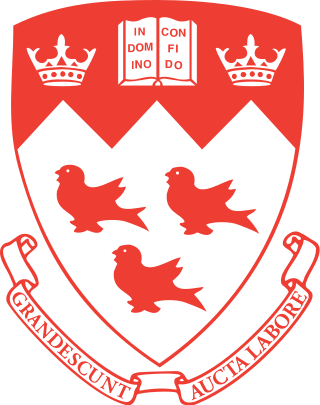
McGill University is an English-language public research university located in Montreal, Quebec, Canada. Founded in 1821 by royal charter, the university bears the name of James McGill, a Scottish merchant whose bequest in 1813 established the University of McGill College. In 1885, the name was officially changed to McGill University. With more than 39,000 students, it is one of the largest universities in Canada by enrolment.
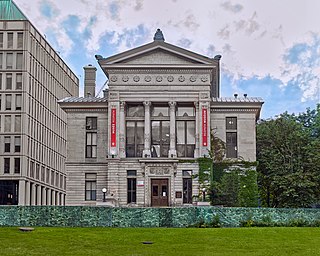
The Redpath Museum is a museum of natural history belonging to McGill University and located on the university's campus on Sherbrooke Street West in Montreal, Quebec, Canada. It was built in 1882 as a gift from the sugar baron Peter Redpath.

Opened in 1893, Redpath Hall was McGill University's first dedicated library building. It is situated at 3461, rue McTavish. Through numerous renovations, the library was extended to the south with the addition of the Redpath Library Building and the adjacent McLennan Library, built in 1967-1969 .Today, the Redpath-McLennan complex houses the Humanities and Social Sciences Library, the largest branch of the McGill University Library.
The McGill University Life Sciences Research Complex (MULSRC) or simply the McGill Life Sciences Complex is a collaborative effort between McGill's Faculty of Science, Faculty of Medicine and Health Sciences and the McGill University Health Centre to create a multi-disciplinary research environment for investigators in the life sciences. The complex brings scientists together to work on research projects within five thematic biomedical fields:
The McLennan Library Building of McGill University in Montreal, Quebec, Canada is situated at 3459, rue McTavish on the northeast corner of rue Sherbrooke and rue McTavish. The building, along with the Redpath Library Building, which is adjacent to the McLennan Library Building, currently houses the Humanities and Social Sciences Library, the largest branch of the McGill University Library.

McGill University Library is the library system of McGill University in Montréal, Québec, Canada. It comprises 13 branch libraries, located on the downtown Montreal and Macdonald campuses, holding over 11.78 million items. It is the fourth-largest research intensive academic library in Canada and received an A− from The Globe and Mail's 2011 University Report, the highest grade awarded to the library of a large university.
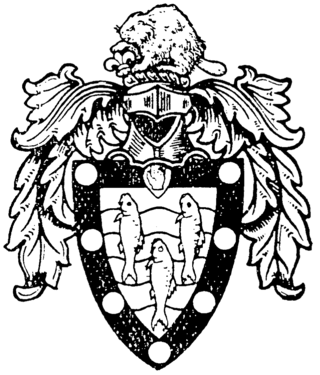
The Osler Club of London is a society founded in 1928 to encourage the study of the history of medicine, particularly amongst medical students, and to keep "green the memory of Sir William Osler". Membership in the club is open to medical men and women, medical students, and persons associated with the history of medicine and in allied sciences.

Sir Andrew Thomas Taylor, JP, RCA, FSA, FRIBA was a British architect and councillor. He was born in Edinburgh, Scotland, and practised architecture in Scotland and London before emigrating to Montreal, Quebec, in 1883, where he designed many of the buildings of McGill University. He retired from architecture in 1904 and returned to London, where he served on London County Council from 1908 to 1926. He was knighted for his political services in 1926.
Jonathan Campbell Meakins was a Canadian physician and medical author and member of the Canadian Medical Hall of Fame. In authorship he is known as J. C. Meakins. He published over 160 works, including the textbook The Practice of Medicine. He was also the founder and first president of the Royal College of Physicians and Surgeons of Canada. He was the Dean of the McGill University's Faculty of Medicine from 1941-1948.

Horst Oertel M.D., Emeritus Professor and Head of Pathology at McGill University, Montreal (1918–1938), he was well-known on both sides of the Atlantic. Five of his books are still published today as standard texts for students of Pathology.
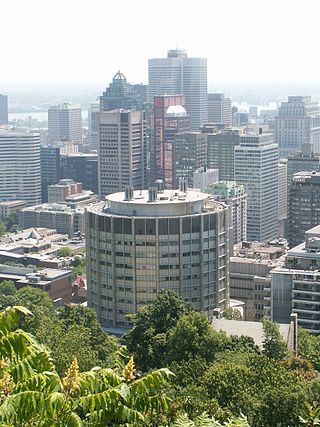
The McIntyre Medical Sciences Building is part of the McGill University campus in Montreal, Quebec, Canada. A concrete building built in 1965, it is known for its circular shape. The McIntyre Building is the central hub of the McGill University Faculty of Medicine. Its sixteen floors include classrooms, research facilities, laboratories, offices and a cafeteria. Its design, by Canadian architect Janet Leys Shaw Mactavish of the architecture firm Marshall and Merrett, is meant to reduce traffic and circulation between rooms.

Frederick Noël Lawrence Poynter FLA was a British librarian and medical historian who served as director of the Wellcome Institute for the History of Medicine from 1964 to 1973.

The American Osler Society is an organisation dedicated to the history of medicine and focuses on the "life, teachings, and ethical example of Sir William Osler". It works in co-operation with the Osler Library of the History of Medicine at McGill University and consists of a group of physicians, medical historians, and other related professions united by "the common purpose of keeping alive the memory of Sir William Osler".





















